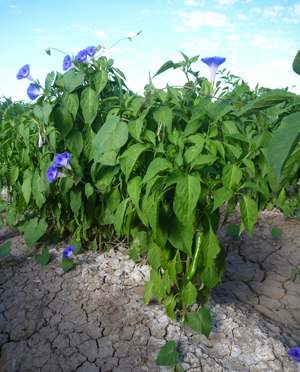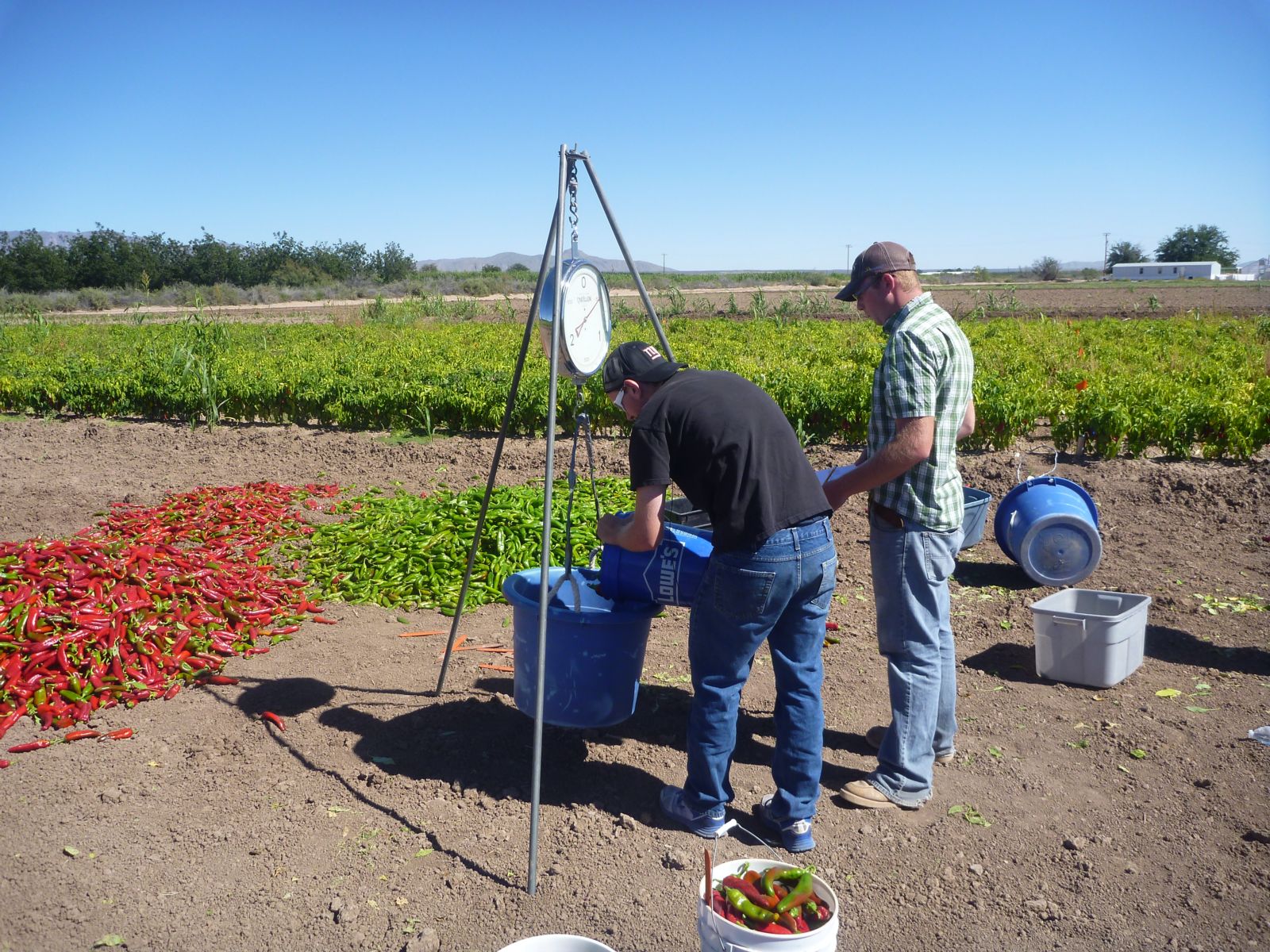Can an Economic Model Show Growers the Importance of Reducing the Weed Seed Bank?
It takes 3.6 seconds to hoe a tall morning glory plant in a field of New Mexico chile pepper.
 That was one of the interesting findings of a Western IPM Center-funded project conducted by Brian Schutte at New Mexico State University, who developed an economic model for using integrated pest management tactics for weed control in chile pepper.
That was one of the interesting findings of a Western IPM Center-funded project conducted by Brian Schutte at New Mexico State University, who developed an economic model for using integrated pest management tactics for weed control in chile pepper.
“Where the project comes from is trying to communicate to growers to need to control the weed seed bank in vegetable cropping systems,” Schutte explained. “As seed-bank density increases, there are real consequences – an increase in the number of weeds that escape treatment, and in turn an increase in the number of hoeings and increased difficulty to harvest.
Schutte used tall morning glory in his two-year study because it’s a particularly problematic weed for chile growers in the Southwest. It emerges in the middle of the growing season, doesn’t respond well to chemical control and is a vine that wraps around the pepper plants and make even hand control difficult. And because the cost of labor is one of the biggest factors pressuring U.S. chile pepper growers, finding a way to reduce the labor needed for weed management – even by 3.6 seconds per weed – is important.
“Chile growers are trying to reduce their reliance on hoeing, and to do that they’ve got to think a little more long-term than year-to-year,” he said. “They’ve got to maintain their fields really quite clean.
“People ask if a “no seed” threshold in chile is the goal, and I think we really do have to think about it,” he continued. “Thirty two or 33 of the 40 problem weeds in chile pepper are all annuals – all coming up through the seed bank.”

When fields were treated with the pre-emergent herbicide pendimethalin, four percent of non-dormant seeds escaped the treatment, and each escaped weed produced an average of 540 seeds. All of these findings – and the 3.6 seconds hoeing time – were used to develop a spreadsheet-based model growers can use to input their own figures and see the likely effects of controlling, or not controlling, the morning glory seed bank.
“We developed the model to try to communicate these findings in a way that’s meaningful to growers,” Schutte said.
So is 3.6 seconds per extra weed meaningful?
“That’s what I’m trying to determine,” he said. “Ideally, it would completely remove the need for one whole hoeing, and that would be meaningful.”
Chile pepper is planted in March and April in the Southwest, with green chiles harvested in August and September, and reds harvested through the end of October. There is a lot of variation in hoeing schedules, Schutte said, with some growers hoeing every two to three weeks, and others hoeing just three of four time per season.
“Hoeing fatigue” is also a real issue, he said, as many growers keep their fields pretty clean until the August rains come and weeds sprout like, well, weeds. Being that close to harvest, many growers just let them go, and those weeds restock the seed bank for the next year.
Schutte has presented his findings and his economic model at vegetable and chile pepper association meetings, and graduate students will be interviewing growers to see how the information might influence their production methods. So far, he said, some growers have been receptive to the idea of seed-bank management, and others just want to know what they can spray to control morning glory.
“So that’s what we’re looking at now,” Schutte said. “Who’s receptive, and what’s unique to them? Is it the size of their operations, their age or experience, the markets they sell to? I’m looking forward to those answers.”